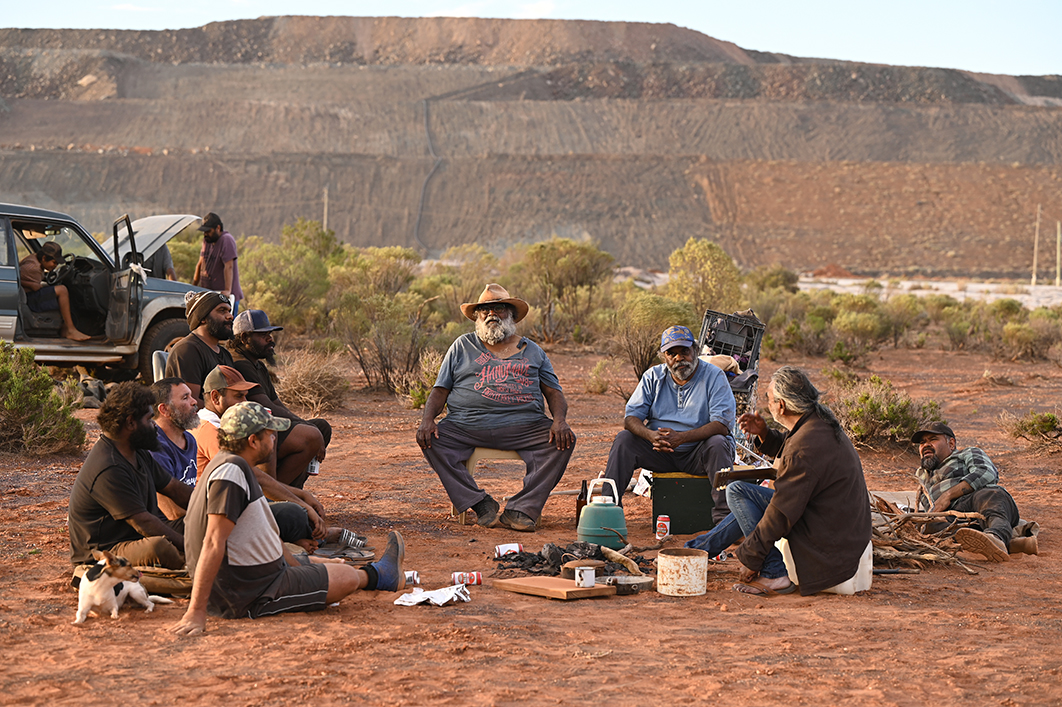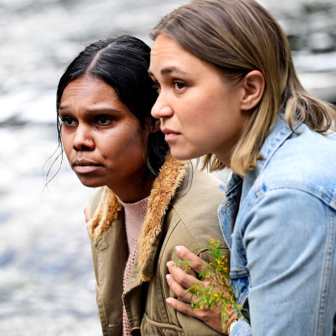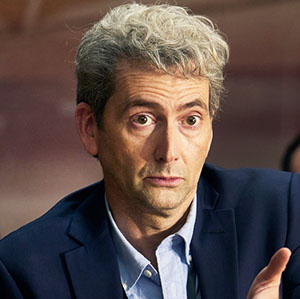Nine years after Ivan Sen’s original Mystery Road was hailed by the Toronto International Film Festival’s selection panel as “one of the most compelling and purely cinematic offerings of the year,” the latest in the movie’s spin-offs, Mystery Road: Origin, will feature this month in the festival’s Primetime program.
As scriptwriter, editor, composer, cinematographer and director, Sen might have laid claim to auteur status in the tradition of the visionary Russian director Andrei Tarkovsky, one of his acknowledged influences. But Mystery Road was also a genre film, a Western with a crime story at its heart. Its esoteric quality of “silence made visible,” in the words of Inside Story’s late film critic, Sylvia Lawson, was balanced by a commitment to building narrative suspense and creating a heroic detective figure in Jay Swan, played by Aaron Pedersen.
Sen’s dramatic world took on a life of its own, sustaining its imaginative hold as the baton was passed by a succession of directors, including Rachel Perkins and Warwick Thornton. Thornton’s son Dylan River took the helm for the latest series, a prequel that involved a challenging change of actor in the central character of Swan, now played by Mark Coles Smith.
Greer Simpkin, a producer of Mystery Road: Origin, sees the depth of the ensemble acting by a predominantly Aboriginal cast as essential to its appeal. Indeed, the three series in which she and casting director Anousha Zarkesh have been involved seem not so much cast as populated.
River agrees with Pedersen’s observation in 2013 that “the land is a bigger character than anyone” in Mystery Road — though for River, he tells me, this is “a subconscious thing.” With his background in cinematography, telling stories through landscape is second nature. Perhaps this experience also gives him an instinct for who belongs in a dramatised train of events so bound up with everyday life in an outback town in Western Australia’s Goldfields region.
A discerning eye for untrained newcomers with a captivating quality on screen is born of Zarkesh’s decades of experience travelling through remote regions, often visiting scores of schools and social organisations in a few days. But choosing actors for the latest series’s eighty speaking roles, not to mention finding 254 extras, was especially complicated. River, Simpkin and Zarkesh were in different states during the pandemic and filming was slated to take place on the other side of a locked border.
Zarkesh’s role, she tells me, is to facilitate the director’s vision by identifying the dramatic tone of the production and drawing together a pool of likely candidates. The process of blending local extras with professionally trained actors and established stars is a challenge any casting director might face, but here it is the heart of the matter. She describes it as “an overall puzzle,” moving from the selection of individuals with distinctive physical and personal qualities to the composition of an ensemble able to portray the surface tensions and underlying bonds of an enduring community. “Something magical’s going to happen when it all comes together,” she says.
River, likewise, talks of a kind of alchemy that occurs when the chosen actors appear on set. “Once we get shooting you can’t see anyone else in the role. They already are who we want — to the extent that we will change the script and even the character to suit them.”
A remarkable instance came with the casting of Megan Lilly Wilding as Ziggy, a bizarre, ragged figure Swan comes across near an isolated hut in the desert. She carries a shotgun, talks of devils and magic, and gives Swan the slip by haring off into the distance on a dune buggy. Wilding has form as a comedian, and there’s an unpredictability to her performance that is nothing short of inspired as she makes the transition from crazed joker to cowed pathos as an elemental being confined to a police cell. The role was originally written for a male actor, but Wilding had an unmistakable claim on it.
Scripted lines were readily dropped, says River, when they were made redundant by nuances of behaviour truer to the complexities of communication in a social environment where so much is left unsaid and often suppressed. Here the series differs markedly from the dominant tendency for Australian TV acting to be over-explicit, as if the goal is always to find the shortest route to the next emotional climax.
When Zarkesh and Simpkin speak of finding actors who will suit the tone of the production, they are identifying the need to be true to the quietness River encourages, even in dialogue fraught with underlying distress. This is a place where grief and loss are deeply embedded, too acute for ready expression.
This is something Pedersen, as the older Swan, made central to the earlier series. He brought a fusion of brooding machismo and brusque restraint that Mark Coles Smith, as the younger Swan, manages to display as qualities in the making. Coles Smith has a lightness about him that lifts the spirit of the new series (yes, he’s even permitted fleeting smiles) without losing the essential gravitas of the character. “Mark was the only person on our list,” says River, and he brought a subtlety to the role that came of the most attentive preparation.
Experienced actors like Coles Smith and Steve Bisley, as the ageing cop who runs the local station, carry intricately detailed backstories in their heads. These may never emerge in the scripted narrative, but the camera has a way of reading these psychological sub-strata in their faces and bodies.
This discipline and imaginative commitment spreads through the cast, who must sustain their conviction through prolonged camera shots and laconic conversations. River prefers to shoot dialogue with a single camera, placed “at the distance it needs to be emotionally,” which means actors need the concentration for a single, prolonged take. There are no opportunities to mix shots from different angles in the editing room.
As River heads for Toronto to promote the series to an international audience, Zarkesh is in the Northern Territory scouting for new talent for Warwick Thornton’s next film, which needs a group of eight- to twelve-year-old boys to take lead roles. What does she look for? First, kids who are confident, playful, expressive in improvised games; and at the next level, kids who listen, draw on imagination and come from a truthful place. And when they start to form a relationship with the camera, “they’ll break your heart.” •




